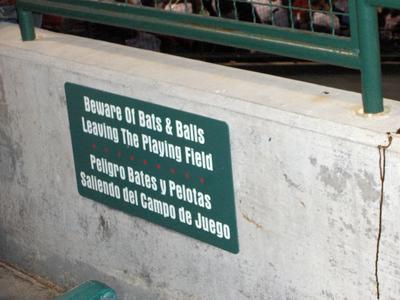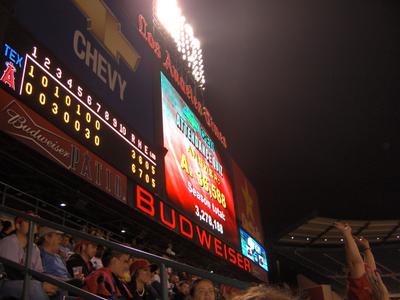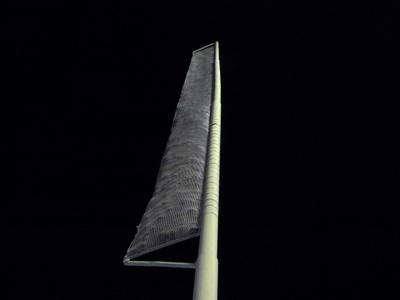 The E Flat Ionian minor 2 no 5 Scale as you would find it on any conventionally tuned, equal tempered instrument.
The E Flat Ionian minor 2 no 5 Scale as you would find it on any conventionally tuned, equal tempered instrument.
Friday, September 30, 2005
Scale of the Day: E Flat Ionian minor 2 no 5
 The E Flat Ionian minor 2 no 5 Scale as you would find it on any conventionally tuned, equal tempered instrument.
The E Flat Ionian minor 2 no 5 Scale as you would find it on any conventionally tuned, equal tempered instrument.
Thursday, September 29, 2005
Scale of the Day: F Sharp Mixolydian no 4
Wednesday, September 28, 2005
One Full Year of HurdAudio Blogging!
 One year ago today the inaugural "Why Harmony?" post went up. An entry that -- much to my surprise -- still periodically draws interesting feedback to my inbox. It's been an interesting experiment in the transmission and cross-pollination of ideas in an instant, self-publishing venue. It's been a pleasure hearing from and sharing ideas with similarly music-obsessed people.
One year ago today the inaugural "Why Harmony?" post went up. An entry that -- much to my surprise -- still periodically draws interesting feedback to my inbox. It's been an interesting experiment in the transmission and cross-pollination of ideas in an instant, self-publishing venue. It's been a pleasure hearing from and sharing ideas with similarly music-obsessed people.During this most recent orbit around the sun I explored a personal take on Black History Month and Women's History Month through 50 individual blog entries. Then I uprooted from the Seattle area and set up HurdAudio operations in southern California. I installed two entries in the Hall of Heroes (with plans for more). I advocated for the preservation of the music of Sun Ra. (I'm still haunted by that image of the wardrobe cabinet filled with unrecorded Sun Ra scores and feel strongly that something needs to be done there.) The HurdMusic material is just getting started. I dipped a cautious toe into political topics. And even veered into my baseball obsession a few times. (The Angels just clinched the AL West yesterday! Having the postseason nearby makes my recent move worthwhile.) And there have been a whole lot of "Scale of the Day" entries.
It's interesting to see which entries strike a nerve or draw a lot of search engine traffic. There's something encouraging about gauging a sustained, international interest in a body of music that means a great deal to me personally. I am more optimistic that valuable cultural achievements will endure as natural human curiosity leads people to seek things out.
Scale of the Day: E Flat Dorian no 4
Tuesday, September 27, 2005
Scale of the Day: E Lydian 1% narrow
Monday, September 26, 2005
Sunday, September 25, 2005
Scale of the Day: E Flat Lydian 1% wide
Saturday, September 24, 2005
It's not sports.... it's Baseball!
 So HurdAudio made the multi-county trek to Anaheim last night to watch the Angels complete their late-season 3-game sweep of the Texas Rangers. The Los Angeles Angels of Anaheim are seeking to cement their ticket to the post-season and if they manage to go all the way this year I suspect all the other teams will look into changing their names in the off season as a good luck mechanism. The energy was noticeably different from last week's outing between two teams that are well out of contention.
So HurdAudio made the multi-county trek to Anaheim last night to watch the Angels complete their late-season 3-game sweep of the Texas Rangers. The Los Angeles Angels of Anaheim are seeking to cement their ticket to the post-season and if they manage to go all the way this year I suspect all the other teams will look into changing their names in the off season as a good luck mechanism. The energy was noticeably different from last week's outing between two teams that are well out of contention. This time I watched the game perched just above the "batter's eye" (that dark green backdrop that allows the hitters to see the contrasting white balls coming at them at 90+ m.p.h.) in center field. The fountains and geysers in the "A" rock formation to my right kept an aquatic element in the overall sonic environment. The fireworks that accompanied the national anthem, celebrated homeruns and the win were launched from the fountain area and were astonishingly loud when observed from such close proximity. The smoke, smells and enthusiasm of the crowd following Bengie Molina's insurance home run to straight away center (at the base of the fountains) in the 7th inning is the kind of thing one goes to games to experience.
This time I watched the game perched just above the "batter's eye" (that dark green backdrop that allows the hitters to see the contrasting white balls coming at them at 90+ m.p.h.) in center field. The fountains and geysers in the "A" rock formation to my right kept an aquatic element in the overall sonic environment. The fireworks that accompanied the national anthem, celebrated homeruns and the win were launched from the fountain area and were astonishingly loud when observed from such close proximity. The smoke, smells and enthusiasm of the crowd following Bengie Molina's insurance home run to straight away center (at the base of the fountains) in the 7th inning is the kind of thing one goes to games to experience. This is the second time I've attended a game where rookie Ervin Santana has been the starting pitcher. He seemed to get off to a rough start -- throwing over 40 pitches in the first two innings and giving up two runs in the process while Edison Volquez threw just 15 pitches in the bottom of those same innings in frames lasting less than 3 minutes each. But Adam Kennedy came through with a big night. Once things were turned over to the Texas bullpen there was a steady stream of pitchers with terrible Earned Run Averages (11.25 ERA in the majors? Really?) handing out walks and giving up runs. The Rangers rely on their above average offense to overcome such miserable pitching so the key to beating them is to defeat that part of their unbalanced game plan. Though I must say Alfonso Soriano made some amazing defensive plays and is perhaps the best second baseman I've ever seen.
This is the second time I've attended a game where rookie Ervin Santana has been the starting pitcher. He seemed to get off to a rough start -- throwing over 40 pitches in the first two innings and giving up two runs in the process while Edison Volquez threw just 15 pitches in the bottom of those same innings in frames lasting less than 3 minutes each. But Adam Kennedy came through with a big night. Once things were turned over to the Texas bullpen there was a steady stream of pitchers with terrible Earned Run Averages (11.25 ERA in the majors? Really?) handing out walks and giving up runs. The Rangers rely on their above average offense to overcome such miserable pitching so the key to beating them is to defeat that part of their unbalanced game plan. Though I must say Alfonso Soriano made some amazing defensive plays and is perhaps the best second baseman I've ever seen. Rooting against the Rangers seems instinctive so a 7 to 4 outcome was a pleasure. The bell would toll one time for each run scored at the conclusion of every productive offensive frame as Texas was rung up. The Angels have already won another one tonight against Tampa Bay (now they have a 7 game winning streak) and the Rangers have beat back the nearest rival (Oakland) to open up a 4 game lead. Nice. HurdAudio will have to take in the amped up intensity of a playoff game.
Rooting against the Rangers seems instinctive so a 7 to 4 outcome was a pleasure. The bell would toll one time for each run scored at the conclusion of every productive offensive frame as Texas was rung up. The Angels have already won another one tonight against Tampa Bay (now they have a 7 game winning streak) and the Rangers have beat back the nearest rival (Oakland) to open up a 4 game lead. Nice. HurdAudio will have to take in the amped up intensity of a playoff game.
Friday, September 23, 2005
Thursday, September 22, 2005
Wednesday, September 21, 2005
Speech or Song?
 It struck me today that two of my favorite works employ similar, yet contrasting, alternative approaches to vocal delivery that suggest a significant aesthetic road not yet fully explored.
It struck me today that two of my favorite works employ similar, yet contrasting, alternative approaches to vocal delivery that suggest a significant aesthetic road not yet fully explored.Language and speech hold a peculiar facination for me as I struggle with competing forces of acceptance and rejection. The first hurdle is the concrete quality of words as sonic vessals that carry meanings quite independent from their "meanings." Something about the frequent mismatch between semantics and acoustics often rubs me the wrong way. But when this issue is resolved the result is transcendent. The second hurdle is delivery. The esteemed Euro-classical operatic tradition of wide vibratos and sustained tones that shatter spoken rhythmic structure is at best and acquired taste. With all due respect for the literature, tradition and discipline that supports this vocal style I personally find it aesthetically abhorent and look toward Pierrot Lunaire by Arnold Schoenberg and The 17 Lyrics of Li Po by Harry Partch
 as important cues toward writing out of the corner musical culture has painted itself into.
as important cues toward writing out of the corner musical culture has painted itself into.Pierrot Lunaire employs a vocal style called sprechgesang, which is frequently described as being somewhere between speaking and singing. It is notated with an "x" drawn through the stem of the notes in the vocal part and I have often employed it in my own works. This technique absolves the vocalist from sustaining pitches as the rhythmic quality of the vocal part moves into focus. This technique allows for greater flexibility in composing atonal lines for voice and also tends to "speed up" the rate of text delivery so that poetry doesn't get drawn out across torturous sustained, vibrato-heavy tones.
The 17 Lyrics of Li Po features an intoned delivery oriented toward preserving the natural rhythms and inflections of spoken poetry. The instrumentation is paired down to a re-invented bard-like aesthetic of voice accompanied by an "adapted viola" (one of Partch's first instruments, a viola with a long cello fingerboard with color markings for the just intervals). Partch recognized the expressive potential of natural sounding speech as again the text delivery rate is sped up so that the poetry can survive the medium.
Shoenberg and Partch arrived at these similar vocal approaches from two completely different angles. In the end I think they hit at something that lends greater integrity to the text than traditional song form normally allows.
An interesting similarity is that neither of these works is set in the native language of their respective source material. The French poetry of Albert Giraud is set in German. (The spiky, free atonal music of Pierrot Lunaire is well suited to the sonic peculiarities of the German language.) While Li Po's poignant verse is delivered in English resulting in a sound, manner and aesthetic that is uniquely American (and an important work in the "American Maverick" tradition).
This spoken delivery approach to vocal composition suggests an important resolution to the aesthetic issues of text music. The issue of "meaning" can only be confronted on a piece-by-piece basis. With my current project, Salt Tea for voice, violin, cello and re-tuned piano, I try to resolve this aesthetic conundrum by employing anagrams on the base text so the "meanings" are systematically drained over time. The individual "meaning" of words are preserved, yet the narrative and syntactic logic audibly breaks apart. The idea of applying a transitory operation to words in the same manner one would with the abstract elements of music through transposition, inversion or retrograde procedures is enormously appealing.
Tuesday, September 20, 2005
Scale of the Day: E Flat Lydian augmented 5 mapped to the Square-root-of-2
Monday, September 19, 2005
Sunday, September 18, 2005
Scale of the Day: E Flat Pythagorean Lydian
Saturday, September 17, 2005
Scale of the Day: E Lydian minor 2
Friday, September 16, 2005
Invitation
 HurdAudio has been ingesting all kinds of music at a rapid rate this past week. One standout has been Invitation by Joanne Brackeen. This is a standard Piano Trio instrumentation with Clint Houston on the bass and Billy Hart on the drums joining Brackeen's excellent creative work at the keyboard. Recorded in 1976 the tight interaction and aggressive improvisations were strongly suggestive of Myra Melford's early 1990's trio releases or Don Pullen's later Blue Note recordings. But there's an energy underlying this music that is all Brackeen. What an outstanding musician. I really have to hear more.
HurdAudio has been ingesting all kinds of music at a rapid rate this past week. One standout has been Invitation by Joanne Brackeen. This is a standard Piano Trio instrumentation with Clint Houston on the bass and Billy Hart on the drums joining Brackeen's excellent creative work at the keyboard. Recorded in 1976 the tight interaction and aggressive improvisations were strongly suggestive of Myra Melford's early 1990's trio releases or Don Pullen's later Blue Note recordings. But there's an energy underlying this music that is all Brackeen. What an outstanding musician. I really have to hear more.
Thursday, September 15, 2005
Wednesday, September 14, 2005
Gimme Some Peanuts and Cracker Jacks
 Last night was HurdAudio's first time attending a National League ballgame in this still unfamiliar geography. It was the Colorado Rockies versus the LA Dodgers at Dodger Stadium where Jeff Weaver pitched a complete game shutout in just two hours and thirty-three minutes. I was impressed with his delivery style and the precision of his timing as he settled into a steady groove of 9 strikeouts. I don't understand why the Rockies hitters didn't try to do more to break up his rhythm. There's some talent on that cellar-dwelling team (Roy Holliday in particular) so I suspect they will improve in future seasons. Injuries have played a major role in the Dodgers fate this year as they've lost too much talent to make a good run this time around. The NL West is a strange division this year with the Padres sitting on top even as their record fluctuates between losing and an even .500 mark.
Last night was HurdAudio's first time attending a National League ballgame in this still unfamiliar geography. It was the Colorado Rockies versus the LA Dodgers at Dodger Stadium where Jeff Weaver pitched a complete game shutout in just two hours and thirty-three minutes. I was impressed with his delivery style and the precision of his timing as he settled into a steady groove of 9 strikeouts. I don't understand why the Rockies hitters didn't try to do more to break up his rhythm. There's some talent on that cellar-dwelling team (Roy Holliday in particular) so I suspect they will improve in future seasons. Injuries have played a major role in the Dodgers fate this year as they've lost too much talent to make a good run this time around. The NL West is a strange division this year with the Padres sitting on top even as their record fluctuates between losing and an even .500 mark.  Dodger's Stadium is an older ballpark from the 1960s. It felt smaller than other parks I've been to. The sound system isn't integrated into the structure like it is at Safeco Field or Angel's Stadium. Instead, an imposing stack of speakers projects into the stands from just beyond center field. The modest crowd was fairly low energy but did manage to erupt appreciatively whenever a run was scored in this lopsided 7-0 victory.
Dodger's Stadium is an older ballpark from the 1960s. It felt smaller than other parks I've been to. The sound system isn't integrated into the structure like it is at Safeco Field or Angel's Stadium. Instead, an imposing stack of speakers projects into the stands from just beyond center field. The modest crowd was fairly low energy but did manage to erupt appreciatively whenever a run was scored in this lopsided 7-0 victory.An elderly vendor selling ice cream noticed my Mariners ballcap and stopped to talk about the Seattle he was born and raised in and how much he'd love to see that ballclub win a championship during his lifetime. This was completely consistent with the relaxed energy running throughout the experience. Getting outside and watching this game played competitively is always a pleasure.
 The angle was also new for me this time around. Sitting at field level right at the foul pole on the third base side the metallic mesh seemed to tell a story of decades of games and batting practices through a series of baseball-size indentations. Foul and fair balls would frequent this part of the stands allowing me to watch the professional defensive work of some major league outfielders up close. There were no homeruns in this particular game.
The angle was also new for me this time around. Sitting at field level right at the foul pole on the third base side the metallic mesh seemed to tell a story of decades of games and batting practices through a series of baseball-size indentations. Foul and fair balls would frequent this part of the stands allowing me to watch the professional defensive work of some major league outfielders up close. There were no homeruns in this particular game.The evening chill that crept in early let one know that the regular season is winding down with the end of summer. Hopefully there will be some local playoff games to attend this year.

Tuesday, September 13, 2005
Monday, September 12, 2005
Scale of the Day: E Flat Ionian
 Audio example of the E Flat Ionian Scale.
Audio example of the E Flat Ionian Scale.See also:
E Flat Ionian Scale notation.
E Flat Ionian Scale interval analysis.
This scale is also commonly referred to as the "E Flat Major Scale."
Sunday, September 11, 2005
Friday, September 09, 2005
Scale of the Day: G Pythagorean Ionian
 The G Pythagorean Ionian Scale. This scale brings Harry Partch to mind a couple of different ways for me. G natural was his 1/1 (I prefer note use a simple '1' to denote the same concept/numerical value of the tonic/unison). It also brings to mind Partch's lament about "creeping Pythagoreanism" leading to stagnation in western harmonic theory.
The G Pythagorean Ionian Scale. This scale brings Harry Partch to mind a couple of different ways for me. G natural was his 1/1 (I prefer note use a simple '1' to denote the same concept/numerical value of the tonic/unison). It also brings to mind Partch's lament about "creeping Pythagoreanism" leading to stagnation in western harmonic theory.I've been listening to Partch's 17 Lyrics of Li Po a fair bit lately. They are the earliest compositions of his that remain (he destroyed his earlier works) and they clearly establish his stylistic approach to text, vocals and intonation in a manner that carried throughout the rest of his creative output. He began writing the 17 Lyrics of Li Po in New Orleans. A city that will be mourned for some time to come.
Thursday, September 08, 2005
Wednesday, September 07, 2005
Tuesday, September 06, 2005
Scale of the Day: C Mixoldyian augmented 4
Monday, September 05, 2005
Scale of the Day: G Sharp Dorian
Sunday, September 04, 2005
New Orleans
The overwhelming loss of life and history in New Orleans this past week...
Many blogs have addressed this tragedy far better than I could. In particular I admire the expression of the Jesus' General pictured below:
 There are two images in particular from this tragedy that will stay with me. Please click through for a picture of:
There are two images in particular from this tragedy that will stay with me. Please click through for a picture of:
Many blogs have addressed this tragedy far better than I could. In particular I admire the expression of the Jesus' General pictured below:
 There are two images in particular from this tragedy that will stay with me. Please click through for a picture of:
There are two images in particular from this tragedy that will stay with me. Please click through for a picture of:Saturday, September 03, 2005
Scale of the Day: E 3, Cube-root-of-2, Construct #1, Lydian Mode - In Square-root-of-2-space
 The E 3, Cube-root-of-2, Construct #1, Lydian Mode - In Square-root-of-2-space - Scale. Another long name for a two-note scale. This time the hybrid lattice (with a Pythagorean axis and the cube-root-of-2 forming its dimensions) is folded into square-root-of-2-space (otherwise known as an equal-tempered "tritone" 600 cents in size. This short sequence of intervals repeats at every 600 cents in the same manner most "traditional" scales repeat their interval sequence at every 1200 cent octave.
The E 3, Cube-root-of-2, Construct #1, Lydian Mode - In Square-root-of-2-space - Scale. Another long name for a two-note scale. This time the hybrid lattice (with a Pythagorean axis and the cube-root-of-2 forming its dimensions) is folded into square-root-of-2-space (otherwise known as an equal-tempered "tritone" 600 cents in size. This short sequence of intervals repeats at every 600 cents in the same manner most "traditional" scales repeat their interval sequence at every 1200 cent octave.Another thing to keep in mind with Square-root-of-2 based scales is that, compositionally, pitches 600 cents apart are to be treated as pitch-class equivalents. This can have an interesting auditory effect as the traditional 1200 cent "octave" is treated as a 'consonance' equal to that of the "tritone." It's an effect that is both familiar and disconcerting (a good pairing to work with musically).
Two-note scales tend to be harmonically impoverished. Any composition that makes use of such scales is "minimalist" in the strictest sense of the term.
Friday, September 02, 2005
Scale of the Day: E 3, Square-root-of-2, Construct #1, Lydian Inversion
Thursday, September 01, 2005
BlogDay 2005
 If the blogger sees its shadow then we can expect 6 more weeks of summer...
If the blogger sees its shadow then we can expect 6 more weeks of summer...Somewhere between meme and tradition the official BlogDay ritual consists of linking to 5 other blogs outside one's normal topic of focus (and preferably from other countries from around the world).
I'll start local:
From Los Angeles, I present Baking Sheet. Mmmmm.... rice pudding....
From Maine, I present Wampum. Progressive politics, Indian Issues, and Autism Advocacy.
From Prague, I present Prague:Buzznet. A photo blog featuring this beautiful city.
From Amsterdam, I present the Bicyclemark's Communique.
And the Timely Report, a blog about Japanese baseball. The anime graphics on this one are a blast.
Enjoy. BlogDay comes only once a year.
Subscribe to:
Comments (Atom)



























